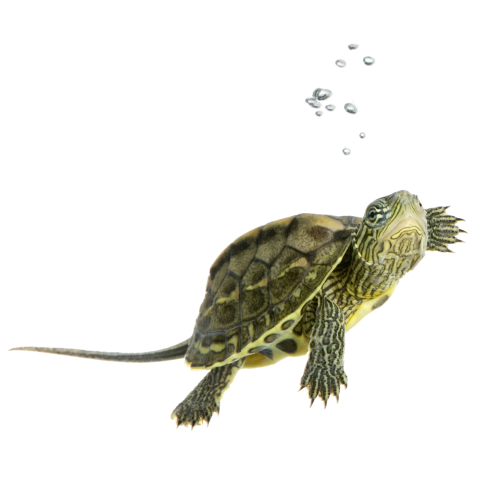Fin rot disease is a common and preventable ailment that afflicts aquarium fish, often resulting from poor environmental conditions and bacterial or fungal infections. In this comprehensive guide, we will delve into the causes, symptoms, treatment, and prevention of fin rot disease, ensuring your aquatic companions enjoy a healthy and vibrant life.
Unveiling the underlying causes of fin rot

This phenomenon is predominantly observed in fish when they are exposed to subpar environmental conditions, which can consequently lead to bacterial infections, sometimes fungal also.
Environmental factors :
Ammonia Buildup: Ammonia is a toxic waste product produced by fish and decaying organic matter. When ammonia levels rise due to inadequate filtration or overfeeding, it can weaken a fish’s immune system, making them susceptible to bacterial infections like fin rot.
Temperature changes:Rapid changes in water temperature stress fish, impairing their immune response. This can create an environment conducive to bacterial growth.
Chlorine Presence: Chlorine, often found in tap water, can be harmful to fish if not properly treated or removed. Exposure to chlorine can lead to stress and increased susceptibility to disease.
Overcrowding: An overcrowded tank leads to increased competition for resources, higher waste production, and territorial disputes among fish. These stressful conditions weaken their overall health and immunity.
Subpar Diet: Inadequate nutrition can compromise a fish’s immune system, leaving them less able to fend off bacterial infections.
Aggressive Tank mates: Aggressive fish may nip at the fins or tails of their tank mates, causing physical injuries that can serve as entry points for bacteria.
Unmasking the culprits:
Bacterial infections:

Pseudomonas fluorescens:
Pseudomonas fluorescens is one of the primary bacterial pathogens responsible for fin rot disease. It thrives in aquatic environments and becomes pathogenic when fish are stressed or their immune systems are compromised.
Tissue Damage: This bacterium invades the damaged or weakened tissues of the fish’s fins or tails, leading to the characteristic ragged rotting of these structures.
Flexibacter columnaris:
Flexibacter columnaris, also known as Columnaris disease, is another bacterial pathogen linked to fin rot. It can affect fish when environmental conditions are unfavorable or when fish are stressed.
Symptoms: Flexibacter columnaris infection can cause white, thread-like lesions on fins and skin, progressing to tissue erosion if left untreated.
Nocardia:
Nocardia is a less common but potential pathogen associated with fin rot disease. It can affect fish, particularly in aquariums with compromised water quality.
Infection Characteristics: Nocardia infections can manifest as nodules or lesions on the fish’s skin and fins.
Mycobacterium:
Mycobacterium infections, specifically Mycobacteriosis, can lead to fin rot-like symptoms in fish. It is a chronic bacterial disease that may not always present typical fin rot signs but can affect the fish’s overall health.
Tissue Damage: This bacterium invades the damaged or weakened tissues of the fish’s fins or tails, leading to the characteristic ragged rotting of these structures.
Fungal Infections:
Secondary Infections: While less common than bacterial infections, fungi can also contribute to fin rot. They often follow bacterial infections when the fish’s protective slime coat is damaged, creating an opportunity for fungi to invade.
From beauty to decay : signs of fin rot

Observable Signs:
Color Changes: Fins and tails may exhibit black, grey, or white spots.
Ragged Fins: Fins and tails may appear frayed or deteriorated.
Behavioral Changes: Infected fish may display weakness, lethargy, and reduced appetite.
Inflammation: The base of the tail may show signs of redness and swelling.
The Battle Plan – Treating and Healing Fin Rot

As issues often stem from underlying causes, it’s essential to address the root problems before resorting to symptomatic treatments
first and foremost strategy should be removing the stress
Start by conducting tests for pH levels, ammonia, temperature, chlorine, nitrite, and nitrate in the aquarium water.
Regular and scheduled partial water changes are essential for maintaining a healthy aquatic environment and can significantly reduce stress among your fish.
Always be mindful of your fish’s feeding habits, avoiding both overfeeding and underfeeding. Overfeeding can lead to stress, while underfeeding can compromise their health and weaken their immune system.
To alleviate stress in your fish, consider using products like Horizone – Dr. Fungus,
which can be very effective.

Once stress is reduced, you can proceed to treat any associated bacterial infections using Dr. Bacteria.

Armor Against Fin Rot – Prevention and Vigilance

Maintaining Ideal Conditions:
Clean Water: Regularly monitor and maintain optimal water parameters.
Avoid Overcrowding: Ensure your aquarium inhabitants have sufficient space.
Balanced Diet: Provide a well-rounded and appropriate diet for your fish.
Compatibility: Select tank mates carefully to minimize aggression.
Early Detection:
Monitor your fish for any signs of distress or illness.
Act swiftly at the first sign of trouble to prevent the spread of disease.
In conclusion, fin rot disease is indeed common but entirely preventable with proper care and vigilance. By understanding its causes, recognizing symptoms, and following treatment and prevention strategies, you can ensure your aquarium fish thrive in a healthy and disease-free environment. Remember that a little attention and care go a long way in keeping your aquatic companions happy and vibrant.


















